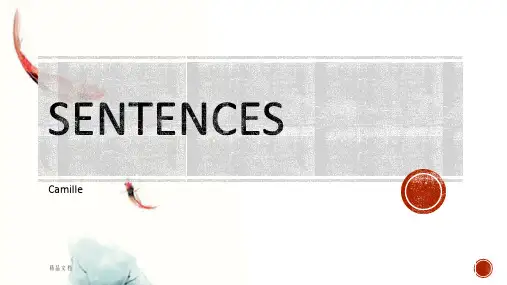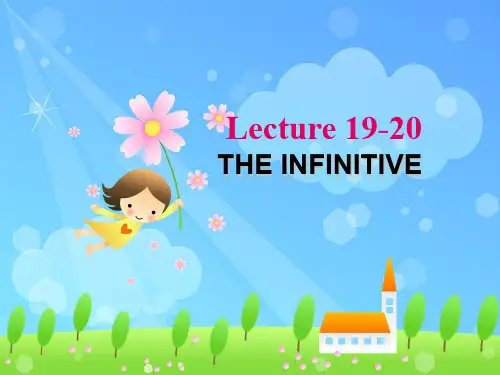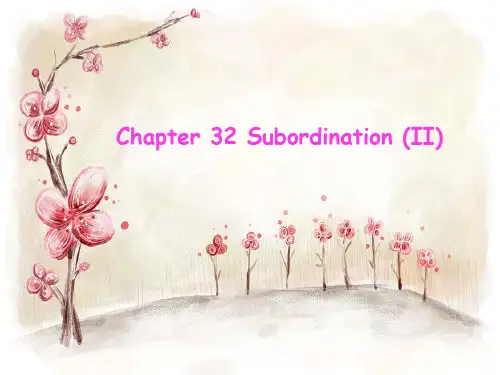章振邦《新编英语语法》课件Lecture 3
- 格式:ppt
- 大小:1.28 MB
- 文档页数:37
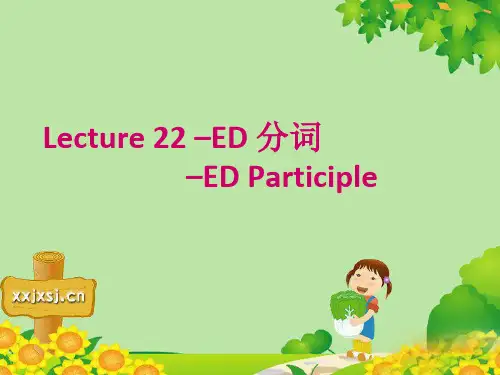

教案新编英语语法教程章振邦2016——2017学年度第二学期本课程教学总体安排课程名称:商务英语语法与词汇课程性质与类型:限选课总学时28、学分:2教学目的与要求:1)开设此课,旨在让学生系统学习和掌握各类语法现象,并且学以致用,活学活用,力求避免在使用英语词汇的过程中出现语法错误。
2)帮助学生理解和掌握各类语法现象所使用的规则,以便他们在以后的专业四级考试和工作中恰当地运用英语语法。
3)扩大学生的商务英语词汇量。
教材及参考书目:《新编英语语法教程》章振邦《实用英语语法详解》薄冰《高级英语语法详解》全建强考核方式及成绩计算方法:笔试总成绩=平时成绩X30% + 考试成绩X70%课程教学日历课程名称:商务英语语法与词汇授课学期:2016—2017学年第一学期第1讲教学安排的说明章节题目:句子结构学时分配:2本章教学目的与要求:谓结构和句子分析基本句型课堂教学方案课题名称、句子结构授课时数:2 授课类型:理论课教学方法与手段:讲授、讨论、指导教学目的的要求:1谓结构和句子分析 2基本句型教学重点、难点:1谓结构和句子分析 2基本句型教学内容及组织安排:1主谓结构和句子分析(1)主语和谓语分句按其逻辑意义,通常分为主语和谓语两大部分。
英语在其长期发展中形成一种相对固定的句子结构:“主语+谓语”的结构。
主语是句子的话题,是信息传递的出发点;谓语是对话题所作的说明,是说话人所要传递的信息。
试观察下列诸句:主语谓语China is a great socialist country.中国是一个伟大的社会主义国家。
Marxism-Leninism is a universally applicable truth.马克思列宁主义是放之四海而皆准的真理。
The students have English lessons twice a week.学生们每星期上两堂英语课。
Hans doesn't seem to be taller than Peter.汉斯似乎并不比彼得高。
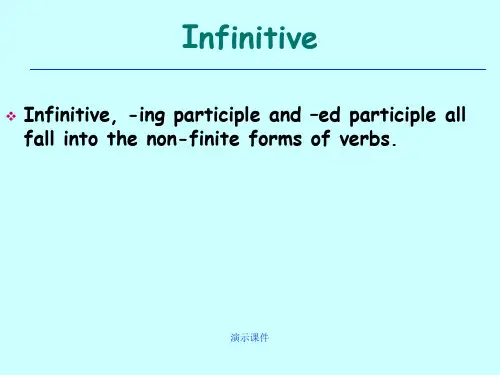
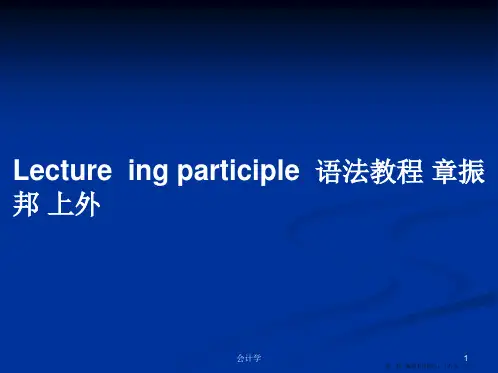
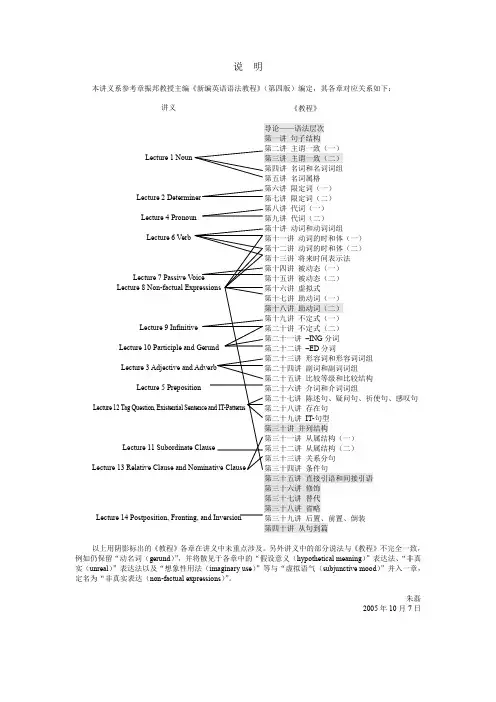
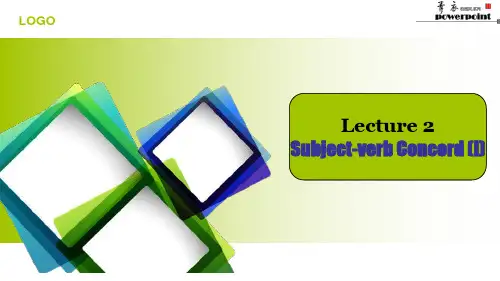
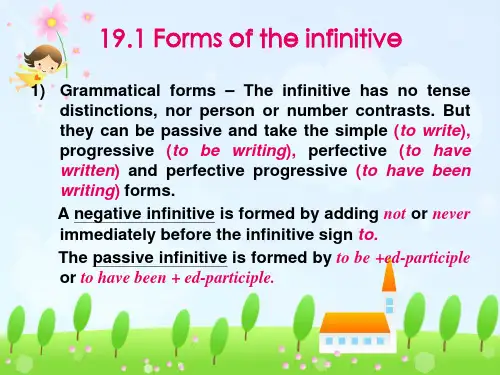
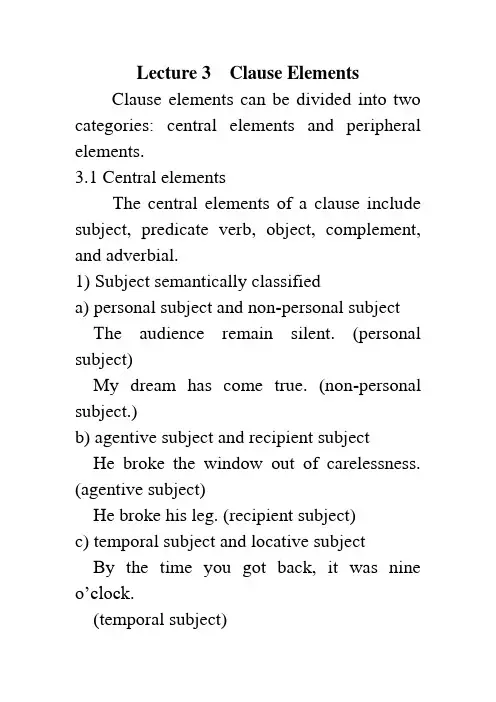
Lecture 3 Clause ElementsClause elements can be divided into two categories: central elements and peripheral elements.3.1 Central elementsThe central elements of a clause include subject, predicate verb, object, complement, and adverbial.1) Subject semantically classifieda) personal subject and non-personal subject The audience remain silent. (personal subject)My dream has come true. (non-personal subject.)b) agentive subject and recipient subjectHe broke the window out of carelessness. (agentive subject)He broke his leg. (recipient subject)c) temporal subject and locative subjectBy the time you got back, it was nine o’clock.(temporal subject)This bedroom sleeps six students. (locative subject)d) instrumental subject and eventive subject The key opened the door. (instrumental subject)A car knocked them down. (instrumental subject)His marriage is next week. (eventive subject)2) Predicate verb/PredicatorThe predicate verb is the central part of the predication. It is usually expressed by a verb phrase, either a simple VP or a complex VP. For example:He got up early so as to catch the first train. Nobody could make me change my mind. The children might have been playing in the garden.3) Object semantically classifiedSemantically, objects can be divided into recipient object, resultant object, causative object, metonymic object and cognate object.a) Recipient objecte.g. The department has offered me a post.b) Resultant objecte.g. I’m baking a cake.c) Causative objecte.g. The captain marched the troops away.d) Metonymic objecte.g. He is not smoking a pipe.e) Cognate objecte.g. John lives a quiet life.He dreamt a terrifying dream.4) ComplementThe complement includes subject complement and object complement. The subject complement, which describes what the subject refers to, is usually used together with the linking verb, forming a “linking verb + complement” construction.She was all smiles when we went in.You can rest assured that we will do our best.The object complement, which describes thecharacteristics of what the object refers to, is usually placed immediately after the direct object. It is preceded by as, or occasionally by for, with some verbs. For example:Police were treating the incident as murder. The anticipatory it is used as the formal object when the object is too long. For example:We consider it very important to use information technology.5) AdverbialAdverbials are generally optional in the clause structure. Adverbials in the form of adverb phrases, prepositional phrases, or clauses are more mobile than the other clause elements. Their positions are determined, to a larger extent, by textual and pragmatic factors rather than by syntactical factors. Adverbials can be divided into three types: depictive adverbial/adjunct, stance adverbial/disjunct, and linking adverbial/conjunct. The depictive adverbial isthe central element of the clause and the stance and linking adverbials are peripheral. Semantically, depictive adverbials can be classified into:a) adverbial of time and placee.g. I’ll be back before you have left. Wherever you go, I’ll go with you.b) adverbial of manner and accompanying circumstancese.g. They treated the child kindly.With all the noise, she was finding it hard to concentrate.c) adverbial of reason, result and purposee.g. He just had to apologize, seeing that he knew he’d made a mistake.The train was so slow that it was almost two hours late.This is good for getting rid of headaches.d) adverbial of condition and concessione.g. You’d be invited to more parties if you smiled more often.Much as I enjoyed the holiday, I was glad tobe home.3.2 Peripheral elementsThe peripheral elements of a clause refer to those that are not structurally integrated with the main structure of the clause. They include stance adverbials, linking adverbials, vocatives, insertions, interjections, parentheses, and initial YES or NO. The following are a few examples of stance and linking adverbials:1) Stance adverbialStance adverbial, also called disjunct, expresses an evaluation of what is being said. It is usually placed at the beginning of (occasionally in the middle or at the end of) a sentence, with a comma to separate it from the rest of the sentence. Stance adverbials are usually realized by adverbs or adverb phrases. They are also realized by prepositional phrases, non-finite clauses, verbless clauses and occasionally by finite clauses.Honestly, I think you are mistaken.Very frankly, I’m tired o f it.In my opinion, you’d better go with us.To be sure, some people may disagree. Curious, the game turned out that way. Even more important, he is in charge of the project.What’s more, this project offers prospects ofa great profit.2) Linking adverbialLinking adverbial, also called conjunct, has the function of conjoining independent units: phrases, clauses or sentences. Linking adverbials are commonly realized by conjunctive and explanatory adverbs and prepositional phrases, etc. semantically, the conjunctive roles can be dintinguished into: a) Linking adverbials denoting listing and enumeration, e.g.This project won’t work: for a start, it’s a bad idea, and secondly, it’ll cost too much. They talked about it for hours. Finally, they decided to go.b) Linking adverbials denoting reinforcement,e.g:The house is not big enough for us, and furthermore, it is too far from town.They ate a seven-course meal; in addition, they drank three bottles of wine.c) Linking adverbials denoting apposition, e.g.:The passenger plane of the 1980s, namely, the supersonic jet, transformed relations between people of the world.He is very fat, that is, he weighs 273 pounds.d) Linking adverbials denoting result, e.g.:It rained three days on end. Consequently, all the land here was under water.The Rainers refused to pay the higher rent when an increase was announced. As a result, they were evicted from the house.e) Linking adverbials denoting semantic equation, e.g.:You must pack plenty of food for the journey. Likewise, you will need warm clothes, so pack them too.f) Linking adverbials denoting inference, e.g.: I’ve never been to Wales. I, therefore, don’t know much about that place.Do what you are told to; otherwise, you will be punished.g) Linking adverbials denoting replacement, e.g.:They are enjoying themselves. (Or) Rather, they appear to be enjoying themselves.A common saying goes, “Knit the brows and you will hit upon a stratagem.” In other words, much thinking yields wisdom.h) Linking adverbials, denoting antithesis, e.g.: On the one hand, you don’t want to be too aggressive. On the other hand, you shouldn’t be too tired.He takes no interest in studies; instead, he plays tennis all day.i) Linking adverbials denoting concession, e.g.:It was a very complicated test. He, nevertheless, passed it with distinction.The expression is ungrammatical; all the same, it is a part of the common tongue.j) Linking adverbials denoting temporal transition, e.g.:They’ll be here in 10 minutes. Meantime/Mean while we’ll have some coffee. Tom was now undergoing many hardships. His brother in the meantime was having an easy time.k) Linking adverbials denoting change of discoursal topic, e.g.:We shall expect you; by the way, dinner will be at eight.The airlines charge half price for the students; incidentally, I’ve bought my ticket to New York.l) Linking adverbials denoting summation, e.g.:All in all, their financial condition is not bad. In conclusion, I’d like to say how much I’ve enjoyed staying here.。
